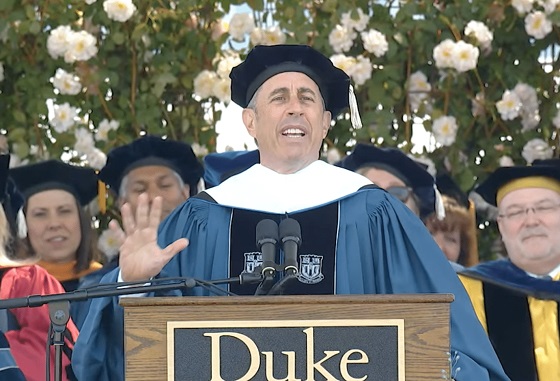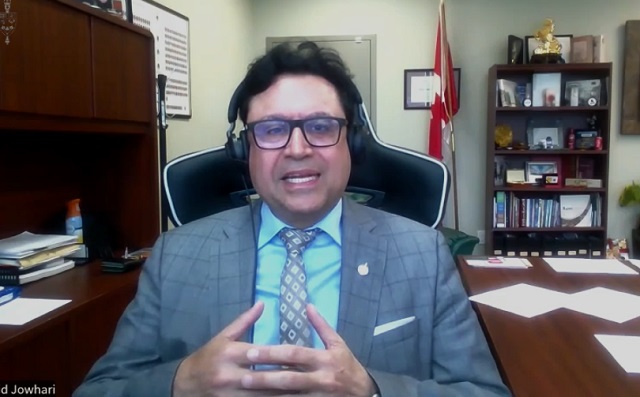Uncategorized
‘Unimaginable destruction’: Hurricane smashes rows of houses

PANAMA CITY, Fla. — Search-and-rescue teams fanned out across the Florida Panhandle to reach trapped people in Michael’s wake Thursday as daylight yielded scenes of rows upon rows of houses smashed to pieces by the third-most powerful hurricane on record to hit the continental U.S.
At least two deaths were blamed on Michael, and it wasn’t done yet: Though weakened into a tropical storm, it continued to bring heavy rain and blustery winds to the Southeast as it pushed inland, soaking areas still recovering from last month’s Hurricane Florence.
Under a perfectly clear blue sky, Florida families emerged tentatively from darkened shelters and hotels to an unfamiliar and perilous landscape of shattered homes and shopping
Over 900,000 homes and businesses in Florida, Alabama, Georgia and the Carolinas were without power.
“This morning, Florida’s Gulf Coast and Panhandle and the Big Bend are waking up to unimaginable destruction,” Gov. Rick Scott said. “So many lives have been changed forever. So many families have lost everything. … This hurricane was an absolute monster.”
But the full extent of the damage was only slowly becoming clear, with some of the stricken areas difficult to reach because of roads blocked by debris or water. An 80-mile stretch of Interstate 10, the main east-west route along the Panhandle, was closed.
One of the hardest-hit spots was Mexico Beach, where Michael crashed ashore Wednesday as a Category 4 monster with 155 mph (250 kph) winds. Video from a CNN helicopter Thursday revealed widespread devastation across the town of about 1,000 people.
Entire blocks of homes near the beach were washed away, leaving nothing but concrete slabs in the sand. Rows and rows of other homes were reduced to piles of debris or crumpled and slumped at odd angles.
Scott said the National Guard got into Mexico Beach and rescued 20 people who survived the direct hit. The town was under a mandatory evacuation order as the rapidly developing storm closed in, but some people were determined to ride it out.
A day later, the beach town remained had to reach by land, with roads covered by fallen trees, power lines and other debris.
The governor pleaded with people in the hard-hit areas not to go home yet.
“I know you just want to go home. You want to check on things, and begin the recovery process,” Scott said. But “we have to make sure things are safe.”
Meanwhile, the Coast Guard said it rescued at least 27 people before and after the hurricane hit, mostly from homes along the Florida coastline, and searched for more victims.
Among those brought to safety were nine people rescued by helicopter from a bathroom of their Panama City home after their roof collapsed, Petty Officer 3rd Class Ronald Hodges said.
Florida officials moved patients from damaged health care facilities. Authorities said the state mental hospital in Chattahoochee, which has a section for the criminally insane, was cut off by land, and food and supplies were being dropped by air.
As of 11 a.m. EDT, Michael was
Forecasters said it could drop up to 7 inches (18
In North Carolina, still struggling to recover after Florence, up to 6 inches of rain had fallen in the mountains by Thursday morning, and authorities carried out several swift-water rescues.
“For North Carolina, Michael isn’t as bad as Florence, but it adds unwelcome insult to injury, so we must be on alert,” Gov. Roy Cooper said.
Along the 200-mile Panhandle, Michael washed away white-sand beaches, hammered military bases and destroyed coastal communities, stripping trees to stalks, shredding roofs, toppling trucks and pushing boats into buildings.
Authorities said a falling tree killed a man outside Tallahassee, Florida, and an 11-year-old girl in Georgia was killed when the winds picked up a carport and dropped it on her home. One of the carport’s legs punctured the roof and hit her in the head.
An Associated Press team drove for miles and encountered extensive destruction around Panama City. Though most homes were still standing, no property was left undamaged.
Downed power lines lay nearly everywhere. Roofs were peeled away and sent airborne. Aluminum siding was shredded to ribbons. Homes were split open by fallen trees.
Hundreds of cars had broken windows. Twisted street signs lay on the ground. Pine trees were stripped and snapped off about 20 feet high.
Vance Beu, 29, was staying with his mother at her home at Spring Gate Apartments, a complex of single-story wood-frame buildings. They piled up mattresses around themselves for protection.
A pine tree punched a hole in their roof, and Beu’s ears popped because of the drop in barometric pressure from the storm. The roar of the winds, he said, sounded like a jet engine.
“It was terrifying, honestly. There was a lot of noise. We thought the windows were going to break at any time,” Beu said.
Sally Crown rode out Michael on the Panhandle thinking at first that the worst damage was the many trees downed in her yard. But after the storm passed, she emerged to check on the cafe she manages and discovered a scene of breathtaking destruction.
“It’s absolutely horrendous. Catastrophic,” Crown said. “There’s flooding. Boats on the highway. A house on the highway. Houses that have been there forever are just shattered.”
More than 375,000 people up and down the Gulf Coast were ordered or urged to evacuate as Michael closed in. But it moved so fast and intensified so quickly that people didn’t have much time to prepare, and emergency authorities lamented that many ignored the warnings.
Based on its internal barometric pressure, Michael was the third most powerful hurricane to hit the U.S. mainland, behind the unnamed Labor Day storm of 1935 and Camille in 1969. Based on wind speed, it was the fourth-strongest, behind the Labor Day storm (184 mph, or 296 kph), Camille and Andrew in 1992.
___
Associated Press writers Tamara Lush in St. Petersburg, Florida; Terry Spencer in Fort Lauderdale, Florida; Freida Frisaro in Miami; Brendan Farrington in St. Marks, Florida; Russ Bynum in Keaton Beach, Florida; Jonathan Drew in Raleigh, North Carolina, and Seth Borenstein in Kensington, Maryland, contributed to this story.
___
For the latest on Hurricane Michael, visithttps://www.apnews.com/tag/Hurricanes
Jay Reeves And Brendan Farrington, The Associated Press
Uncategorized
RCMP recruitment failure has Alberta advocacy group calling for Provincial Police Service

News release from Free Alberta Strategy (A Strong And Sovereign Alberta Within Canada)
“Make no mistake, we are paying for these services that we aren’t receiving. Alberta’s taxpayers are paying tens of millions of dollars for nearly 400 vacant RCMP officer positions – for boots that are not on the ground.”
A recent report from the Royal Canadian Mounted Police (RCMP)’s independent Management Advisory Board had findings that are nothing short of alarming:
“Federal policing has now arrived at a critical juncture of its sustainability, which present risks for the national security and safety of Canada, its people, and its interests,” says the report.
After over a year of diligent study, the Board has been tirelessly firing off flares, signalling to all who will listen: the very foundation of our national public safety apparatus may be at risk of faltering.
This is doubly problematic because, as you well know, the RCMP is also responsible for boots-on-the-ground policing in large parts of the country, including many rural and remote areas – including in Alberta.
Rural crime has been a longstanding issue in Alberta, and social disorder continues to make headlines nightly.
Alberta Minister of Public Safety, Mike Ellis, took to social media platform X (formerly known as Twitter) to express his opinion:
“The independent report finds the RCMP has struggled in recent years to recruit and retain regular members, a problem that’s particularly acute in federal policing. This is not about the hard-working men and women on the frontline: they are doing everything they can. The reality is the RCMP do not have enough officers to police communities in Canada effectively.”
Ellis has been ahead of this story for months now.
In March, Ellis stated that:
“… on average, Alberta has an RCMP officer vacancy rate of 20 per cent. This means that Alberta is only being served by 1,522 of the 1,911 RCMP officers that the federal government has authorized for Alberta.”
“Make no mistake, we are paying for these services that we aren’t receiving. Alberta’s taxpayers are paying tens of millions of dollars for nearly 400 vacant RCMP officer positions – for boots that are not on the ground.”
The consequences of this capacity crisis are far-reaching.
Not only does it jeopardize the safety of Albertans, but it also undermines the credibility of Canada’s federal police force on the international stage.
With limited resources and personnel, the RCMP’s ability to address pressing national and global security concerns is severely compromised.
The Management Advisory Board, created in 2019 by the federal government to provide external advice to the RCMP commissioner, set up a task force in the fall of 2022 to study the federal policing program.
Overall, the report says budget and personnel shortfalls have left the RCMP “operationally limited,” restricting the number of cases it can take on annually.
Here are some more highlights from the report:
“Canada and its people have already begun to see the repercussions of the federal policing program being stretched thin.”
“Federal policing’s overall eroding capacity may have implications for the credibility of Canada’s federal police force and its investigations on the international stage.”
“Ultimately, this may influence Canada’s overall approach and standing in international politics, including its ability to advance global priorities.”
Clearly, we cannot afford to wait any longer.
Municipalities can ease the burden on our national security services by establishing municipal policing.
Several cities in Alberta already have their own police authorities, and the provincial government is providing funding for others interested in exploring this option.
Grande Prairie is already in the process of establishing their own municipal police service.
No word on how many other municipalities have taken the government up on their offer.
Unfortunately, President of Alberta Municipalities Tyler Gandam (also Mayor of Wetaskiwin) is featured prominently on the National Police Federation’s “Keep Alberta RCMP” website.
Interestingly, the Keep Alberta RCMP website doesn’t mention the fact that the advisory board even exists.
It doesn’t mention the report.
The notion that our federal policing infrastructure teeters on the brink of instability while Gandam appears to be asleep at the wheel, is deeply disconcerting.
The safety and security of Albertans must remain our top priority.
We cannot afford to wait any longer.
The time has come for the province to take swift and decisive measures to bolster policing capabilities in Alberta.
It’s time for Alberta to seriously consider the establishment of an Alberta Provincial Police Service.
It has been one of the core tenets of the Free Alberta Strategy.
If you agree, please reach out to your municipality and ask them to take steps to protect your community.
Together, we can keep Alberta safe.
Regards,
The Free Alberta Strategy Team
P.S. We’re hoping you’ll consider contributing to our cause. Your generous donation helps us make a positive impact in our community. No need to worry about any hold-ups or threats here. We’re just passionate about making a difference, and your support goes a long way in helping us achieve our goals.
Uncategorized
Making Alberta a geothermal energy leader

Eavor announces it’s the #1 geothermal energy startup company in the world – January 2024
Alberta is creating Canada’s first geothermal test site to advance drilling innovation, reduce emissions and create jobs.
Geothermal energy uses naturally occurring heat within the earth to heat water and buildings and generate power, with few emissions or environmental impacts. Alberta has vast pockets of heat below ground, making the province Canada’s geothermal leader, but testing and developing new technologies can be a barrier for many companies. Unlike the United States, Japan and other countries, Canada does not currently have an open-access test site to help spur innovation.
Alberta is taking the first steps to create a new Alberta Drilling Accelerator. This groundbreaking facility would be the first of its kind in Canada, establishing Alberta as a global hub for geothermal technology. This will drive new innovations in geothermal and other clean energy projects that can reduce emissions and power communities around the world.
To kick-start the project, the Alberta government is investing $750,000 to conduct a feasibility study led by Calgary-based Eavor Technologies and other stakeholders. The study is the first step in assessing the proposed facility. It will include identifying a site, business planning, research on the governance model, an economic impact analysis and stakeholder engagement that will lay the groundwork for the initial planning stages of the project.
“Alberta has been a global energy leader for more than a century, renowned for our skilled workforce, innovation and one of the largest oil and gas reserves on the planet. The proposed Alberta Drilling Accelerator presents enormous potential to help our province lead the next wave of energy projects here at home and around the world that reduce emissions, create jobs and enhance energy security.”
The Alberta Drilling Accelerator would help companies test out and develop new geothermal drilling techniques or technologies to reduce emissions and drive growth across the clean energy sector. It would be an open-access, technology-agnostic drilling test facility capable of drilling in challenging environments, including deep depths, high temperatures and different rock types.
The accelerator also would help speed up the development of carbon capture, utilization and storage; helium; critical minerals; and other clean technologies and commodities that rely on Alberta’s drilling sector. All of this helps attract investment and bring new technologies to scale in Canada.
“With cumulative geothermal investment poised to reach $1 trillion by 2050, a geothermal arms race is very much underway to commercialize novel drilling techniques that accelerate geothermal development – exhibited by testing facilities in the United States, China and Iceland. As Canada’s first geothermal test bed, the Alberta Drilling Accelerator will help bring geothermal technologies to scale, supporting companies like Eavor. We commend the Government of Alberta for this bold initiative.”
“We are proud to witness Eavor, a CDL-Rockies alumni company, create new opportunities for innovators like themselves to advance the adoption of energy transition technologies like geothermal. The Alberta Drilling Accelerator will further solidify Alberta’s position as a leader in the global sustainable energy landscape.”
If the feasibility study shows the facility is economically and environmentally viable, and if the project is approved by the Alberta government, the facility will start taking shape at the selected site and drilling could start as early as 2025.
“Canada is home to the most advanced drilling technology in the world. Not only do our members support the responsible development of oil and gas, but we are integral in the extraction of new energy resources like geothermal and critical minerals. Our workers are at the epicentre of Canada’s energy transformation. Our people, technology and processes are leading the way towards a more diverse energy future. The Alberta Drilling Accelerator is a government-enabled policy approach to expand Alberta’s drilling capacity and reach its full potential as the world’s most diverse and technologically advanced producer and exporter of sustainable energy and critical minerals.”
“The Alberta Drilling Accelerator is a testament to Alberta’s innovative and entrepreneurial spirit. Leveraging our oil and gas sector expertise, Alberta is poised to become the global leader in developing new geothermal technologies that will play an integral role in reducing emissions while supporting job creation.”
Quick facts
- The Canadian Association of Energy Contractors estimates that one active drilling rig, whether drilling for natural gas or geothermal, creates approximately 220 direct and indirect jobs and
$1 million in tax revenue. - In 2019, Eavor received $2 million in provincial funding through Emissions Reduction Alberta and Alberta Innovates for the world’s first closed-loop geothermal system.
Related information
-

 Economy1 day ago
Economy1 day agoFeds spend $3 million to fly 182 politicians and bureaucrats to climate conference
-

 COVID-192 days ago
COVID-192 days agoNIH Quietly Altered Definition For Gain-Of-Function Research On Its Website, Former Fauci Aide Confirms
-

 Bruce Dowbiggin2 days ago
Bruce Dowbiggin2 days agoJerry Came to See The Babies. And They Walked Out On Him
-

 Addictions11 hours ago
Addictions11 hours agoLiberals shut down motion to disclose pharma payments for Trudeau’s ‘safe supply’ drug program
-

 Energy2 days ago
Energy2 days agoPope Francis calls for ‘global financial charter’ at Vatican climate change conference
-

 Crime2 days ago
Crime2 days agoThe US Canadian border: Greatest number of terrorist watch list individuals being apprehended at northern border
-

 Energy2 hours ago
Energy2 hours agoTech giants’ self-made AI energy crisis
-

 Energy1 day ago
Energy1 day agoNew Report Reveals Just How Energy Rich America Really Is









